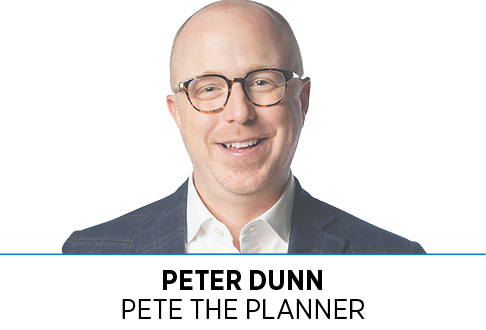Subscriber Benefit
As a subscriber you can listen to articles at work, in the car, or while you work out. Subscribe Now Had you told me in March 2020 that, despite entering year three of a global pandemic, and despite massive labor and supply shortages, the stock market would not only be doing just fine at the end of 2021 but returning an average 17.52% for the last five years (S&P 500), I would have … well … just assumed you’re like everyone else out there who seems to be making up their own version of truth.
Had you told me in March 2020 that, despite entering year three of a global pandemic, and despite massive labor and supply shortages, the stock market would not only be doing just fine at the end of 2021 but returning an average 17.52% for the last five years (S&P 500), I would have … well … just assumed you’re like everyone else out there who seems to be making up their own version of truth.
Alas, you would have been right.
The stock market is on fire. It hasn’t been this consistently hot since 1999, when it then suffered three down years in a row. Is that what’s in our future? I have no idea, but let’s take a look at where we are, anyway, and why I’m especially nervous for one group of people.
Here’s a quick rundown of how a few pertinent asset classes and indexes fared. The S&P 500 finished 2021 up 26.9%. Crude oil was up 56.4%, and Bitcoin saw an increase of 59.8%. The Dow Jones real estate index enjoyed a 35.1% increase, while both gold and silver suffered a less fortunate fate—down 3.6% and 11.7%, respectively.
Before we go much further, don’t make investment decisions based on what you read in this column, ever. That would be silly. Talk to your investment adviser.
The S&P 500 has had two down years in the last 15. In 2018, it fell 4.38%; in 2008, it found itself staring at a massive 36.55% fall. Speaking of fall, I remember the panic investors had in the fall of 2008. It was certainly painful in the moment, as were the months it took for the market to stabilize. Yet even when you include the 36.55% decline of 2008, the S&P 500 has averaged 10.33% annually in the last 15 years.
You might be wondering why I’m offering you number salad this week. It’s certainly not to warn you of some impending disaster, so that you might take action. If anything, I’m reintroducing the idea that, when the market does decide to get rocky once again, you need to think back to this very moment—the moment in which the S&P 500 has averaged over 10% during the last 15 years. This is especially important given the first of those 15 years involved an outright stock market crash that temporarily brought the economy to its knees.
It’s one thing to remind you of good times during bad times; today, I’m making sure you lock this good time into your brain, so it’s more readily available during the next bad time.
Clearly, I’m not worried about the market and how it ebbs and flows.
I’m worried about the modern investor. You know, the ones who have gambling apps, day-trading apps and cryptocurrency apps on their mobile devices. At one point in time, speculation was a minority sliver of a portfolio. Today? Today speculation is the portfolio. Diversification is an absolute afterthought for people drawn to all sorts of esoteric asset classes.
This is what scares me.
The market will get brutalized again, as it does from time to time. If you’re a buy-and-hold investor who has a diversified portfolio, you don’t really care about the correction, because you have defined financial goals with target returns. You have data and decades of history.
Modern investors are in such a hurry to prove their financial prowess via excitement and speculation, that I’m not sure they won’t make natural downturns worse via their nonsensical risk tolerance and tulip-mania tendencies. Modern speculative investors barely know how these alternative asset classes work; how are they supposed to know how a sustained bear market will affect these novelties?
And if the stock market is too rich for your blood, a 60/40 (60% stock, 40% bond) portfolio is still looking amazing, despite bonds’ poor recent performance. The 60/40 portfolio returned 15.43% in 2021 and is still averaging 8.25% over the last 15 years. As I’ve shared before, I personally target 8% returns in my own portfolio, so doing so with considerably less risk might be attractive to you, once you discuss this concept with your financial adviser.
What does 2022 hold for the market? I’m not in the predictions business, but something tells me it was time to remind you how to get prepared for sub-20% returns.•
__________
Dunn is CEO of Your Money Line powered by Pete the Planner, an employee-benefit organization focused on solving employees’ financial challenges. Email your financial questions to [email protected].
Please enable JavaScript to view this content.
